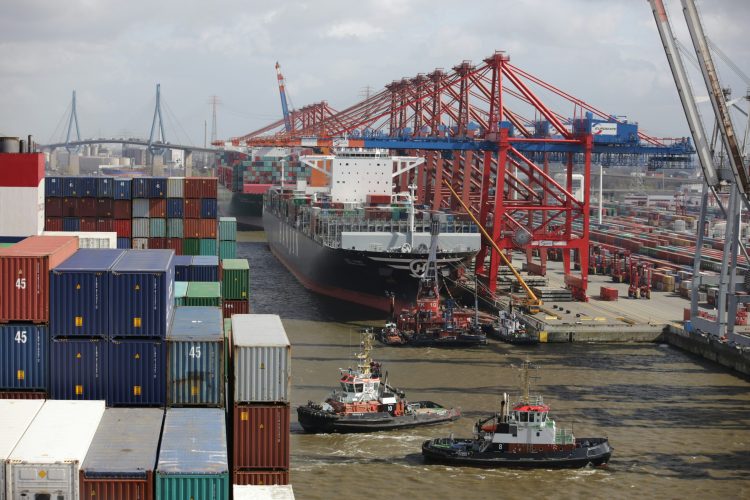Last Updated on:
As businesses continue to expand their reach into global markets, efficient and cost-effective logistics solutions are essential for maintaining competitiveness. Seafreight, or ocean freight shipping, is one of the most reliable and economical methods for transporting large quantities of goods internationally. By leveraging seafreight solutions, businesses can not only reduce shipping costs but also optimize supply chains, enter new markets, and drive long-term growth. Here’s how seafreight can be a powerful tool for business growth and global expansion.
1. Cost Efficiency for Large-Scale Shipments
One of the primary advantages of seafreight is its cost efficiency, especially when transporting bulk goods or large volumes. Ocean shipping offers significantly lower rates than air freight or overland transport, making it ideal for businesses that deal with high quantities of products. Here’s why:
• Economies of scale: Seafreight vessels can carry vast amounts of cargo, allowing shippers to take advantage of economies of scale. This means lower costs per unit compared to air or land transport.
• Lower fuel and transportation costs: While ocean shipping can take longer than other forms of transport, the lower fuel consumption and longer travel distances reduce overall costs. This is a viable option for non-perishable goods that helps businesses save significantly.
• Flexible container sizes: With the option to choose from Full Container Loads (FCL) or Less than Container Loads (LCL), businesses can customize their shipping needs to their specific volume, avoiding unnecessary charges for unused space.
By minimizing transportation costs, seafreight allows businesses to invest more resources into growth initiatives, such as entering new markets or scaling production.
2. Access to Global Markets
Seafreight plays a critical role in helping businesses expand their global footprint. With ports located all around the world, ocean shipping provides access to virtually any market, making it the backbone of international trade. For businesses seeking to penetrate new regions, seafreight offers several advantages:
• Global reach: Seafreight shipping networks connect major global trade routes, allowing businesses to easily access markets in Asia, Europe, North America, and beyond. Whether exporting finished products or importing raw materials, ocean shipping enables efficient cross-border trade.
• Market expansion opportunities: For companies looking to enter emerging markets, seafreight is a reliable and cost-effective solution for establishing a presence in new regions. The ability to ship large volumes of products via ocean freight provides a competitive advantage in markets with high demand and developing infrastructure.
• Increased flexibility for exports and imports: Seafreight supports both import and export activities, making it a versatile solution for businesses looking to grow globally. Whether importing raw materials for production or exporting finished goods, seafreight offers flexible shipping schedules and routes to suit diverse needs.
Expanding into global markets can significantly boost revenue, and seafreight makes it easier for businesses to manage the logistics of international growth.
3. Reliable and Scalable Logistics
Reliability is a key factor in maintaining a strong supply chain, especially when dealing with international markets. Seafreight has long been considered a dependable solution for businesses that need to ensure their products reach destinations on time. Here’s how seafreight contributes to efficient and scalable logistics:
• Predictable schedules: Many seafreight providers operate on fixed schedules, allowing businesses to plan their supply chain activities with confidence. Shipping schedules are typically planned weeks or months in advance, reducing the likelihood of delays and offering transparency.
• Scalability: As businesses grow, their shipping needs evolve. Seafreight solutions offer scalability, allowing businesses to increase or decrease their shipping volumes based on demand. This flexibility ensures that companies can adjust their logistics operations to match their growth trajectory without incurring unnecessary costs.
• Efficient inventory management: With seafreight, businesses can strategically manage their inventory levels. By consolidating shipments or using FCL and LCL options, companies can optimize warehouse space and avoid overstocking or understocking, which helps maintain a balanced supply chain.
By ensuring reliable and scalable logistics, seafreight solutions enable businesses to meet customer demands consistently and avoid disruptions in their supply chains.
4. Sustainability and Eco-Friendliness
As environmental concerns become increasingly important to consumers and businesses alike, seafreight offers a more eco-friendly transportation option compared to other methods. Here’s how leveraging seafreight contributes to sustainability:
• Lower carbon footprint: Seafreight is one of the most environmentally friendly modes of transport when measured by emissions per ton of cargo. Ships produce far fewer greenhouse gas emissions than airplanes or trucks, making seafreight a greener choice for companies seeking to reduce their environmental impact.
• Energy efficiency: Modern cargo vessels are increasingly adopting cleaner technologies, such as fuel-efficient engines and emission-reducing practices. These advancements help reduce fuel consumption and minimize pollution, contributing to a more sustainable logistics chain.
• Sustainable business practices: By opting for seafreight, businesses can align themselves with global sustainability trends and consumer preferences for eco-friendly products and services. This not only enhances the company’s reputation but also helps meet regulatory requirements for emissions in certain markets.
Incorporating seafreight into logistics strategies allows businesses to demonstrate their commitment to sustainability while benefiting from lower transportation costs.
Conclusion
Leveraging seafreight solutions offers businesses numerous benefits, from cost efficiency and global market access to improved supply chain reliability and sustainability. By integrating ocean freight into their logistics strategy, companies can streamline operations, scale more effectively, and support their long-term growth objectives. Whether expanding into new regions or optimizing existing global operations, seafreight provides the flexibility and reliability needed to drive business success in today’s competitive global market.
















